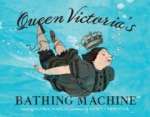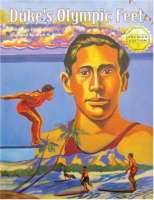Aniana del Mar belongs in the water like a dolphin belongs to the sea. But she and Papi keep her swim practices and meets hidden from Mami, who has never recovered from losing someone she loves to the water years ago. That is, until the day Ani’s stiffness and swollen joints mean she can no longer get out of bed, and Ani is forced to reveal just how important swimming is to her. Mami forbids her from returning to the water but Ani and her doctor believe that swimming along with medication will help Ani manage her disease. What follows is the journey of a girl who must grieve who she once was in order to rise like the tide and become the young woman she is meant to be. Aniana Del Mar Jumps In is a poignant story about chronic illness and disability, the secrets between mothers and daughters, the harm we do to the ones we love the most—and all the triumphs, big and small, that keep us afloat.
Swimming
Sakamoto’s Swin Club:How a Teacher Led an Unlikely Team to Victory
The inspirational and little-known story of a dedicated teacher who coached Hawaiian swimmers all the way to the Olympics, beautifully told in simple rhyme.When the children of workers on a 1930s Maui sugar plantation were chased away from playing in the nearby irrigation ditches, local science teacher Soichi Sakamoto had an idea. He offered to take responsibility for the children — and then he began training them how to swim. Using his science background, Sakamoto devised his own innovative coaching techniques: he developed a strict practice regime for the kids, building their strength and endurance by using the ditch water’s natural current. The children worked hard under the dedicated Sakamoto’s guidance, and their skills improved. They formed a swim club and began to dominate in swimming events around the world.
Cannonball
Determined to execute the perfect cannonball dive, a boy tries to follow everyone’s advice but finally hears Nan, an expert and former champion, who advises doing it his own way.
Queen Victoria’s Bathing Machine

Prince Albert comes up with a royally creative solution to Queen Victoria’s modesty concerns in this true story that reveals an overlooked splash of history. Poor Queen Victoria! She loves to swim, but can’t quite figure out how to get to the water without her devoted subjects glimpsing her swimming suit. (Because, of course, such a sight would compromise her regal dignity.) Fortunately for the water-loving monarch, it’s Prince Albert to the rescue with an invention fit for a queen! This quirky tale about the longest reigning monarch in British history is as fun as it is authentic, and the book includes a picture of the actual bathing machine Prince Albert created.
Little Chicken Duck
Follows the adventures of a duck whose fear of water prevents her from learning to swim until she is assisted by a kindhearted frog and forest birds who reveal how they overcame their own fears.
Ducks Like To Swim
An assortment of animals join a mother duck in making noises in an effort to bring on rain.
Sergio Makes a Splash
Even though he loves water, Sergio the penguin is afraid to swim in the deep water until he learns how.
Splash, Joshua, Splash!

Joshua enjoys water splashing when he feeds the ducks, walks his dog, and especially when he and his grandmother splash in the swimming pool.
Alex In Rome Cl
Duke’s Olympic Feet

Duke Kahanamoku was the twentieth century’s top waterman, and is known as the “father of international surfing.” The first Hawaiian to win an Olympic gold medal, Duke represented the United States in the Olympic Games in 1912, 1920, 1924 and 1932, winning gold, silver and bronze medals. Born in 1890, Duke grew up next to the ocean in Waikîkî. After school, he and his sister and brothers would hit the water. “I was only happy when I was swimming like a fish,” Duke said. Duke and the other beach boys gathered under a hau tree in Waikîkî. They rode the waves at Castles, a prime surf spot, on their sixteen-foot solid wooden surfboards. Years of swimming, surfing and canoe paddling made Duke a fine athlete. He had a strong body, long arms, powerful legs and his hands were said to be as big as buckets. Some claimed he had feet as big as fins and could steer a canoe with his feet alone. Duke knew that he was a very fast swimmer and he trained constantly. He said that God had given him a gift and a whip. “The whip,” he said with a grin, “is to flog myself into getting the most out of the gift.” He felt that, just maybe, he could be a champion and win Olympic gold for Hawai‘i. His chance came August 12, 1911, at Alakea Slip in Honolulu Harbor, when he demolished the world amateur record for the 100-yard freestyle. His excitement was crushed when mainland AAU officials refused to believe his time. “What are you using for stopwatches over there in Hawai‘i?” they asked. “Alarm clocks?” The AAU officials doubted that a virtually untrained swimmer could break a world record. It was up to Duke to prove he could go up against the world’s fastest swimmers and beat them. Along with his athletic accomplishments, Duke is remembered for his concern for others, humility in victory, courage in adversity and good sportsmanship.
Take a closer look at Duke’s Olympic Feet as examined in WOW Review.

